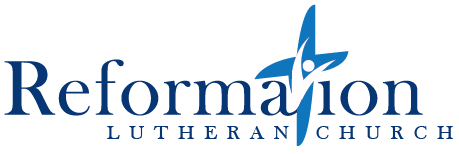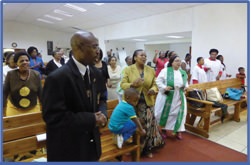Wittenberg was a small provincial town on the edge of the empire when professor and pastor Martin Luther lit an evangelical spark that illuminated God’s grace and prompted reform in the Western church. Over the next five hundred years the good news spread far beyond Saxony and Europe. Today the family of Lutheran churches includes both the Lutheran World Federation (with 72 million congregants in 145 church bodies in ninety-eight nations) and the International Lutheran Council (with thirty-five member bodies in over thirty nations).
People, printing, and politics—all played a part in this process. Students from across Europe and Scandinavia, such as the Swedish brothers Olaus and Laurentius Petri, were drawn to Wittenberg. They participated in lively theological debates and were influenced by Luther and his colleagues. Returning home, these students carried new gospel insight and the movement for reform. They also carried books and soon were producing more, including translations of the Bible and Luther’s works into their own languages. Lutheran ideas and practices were established and endured where those gained support from powerful persons, such as Christian III. Having witnessed Luther’s defense at the Diet of Worms, he introduced Lutheran reforms in his duchy in the 1520s and then into the whole of his realm when he became king of Denmark.
Lutheranism was also spread by migration as Lutherans joined in the global movements of commerce and colonization that followed the so-called age of discovery. With few, but notable, exceptions, religion was not the motivation for Lutheran migration to North America. Rather, the promise of better “daily bread” drew them from northern Europe and Scandinavia, from pre-Revolutionary time into the early twentieth century. Nonetheless, Lutheran migrants packed their Bibles, catechisms, and hymnbooks in their trunks. Upon arrival, they formed congregations, established institutions of mercy and education, and organized synods. Among the oldest congregations in the Western hemisphere is Frederick Lutheran in Charlotte Amalie on St. Thomas, Virgin Islands. Other Lutherans migrated to Australia, Brazil, Argentina, and southern Africa. In each place they adapted to unfamiliar customs, a new language, and being a minority denomination without government support.
Other Lutheran churches have their origin in missionary work begun in the early eighteenth century. Pietists’ concern for holistic, personal faith generated both inner mission work close to home and the impulse to carry the gospel to people who had not heard it. First in south India, then around the world, the Bible and the catechism, translation and schools, were among missionaries’ primary evangelical tools. As the churches have matured, local Lutherans take responsibility to articulate the gospel and address their own social concerns. In the twenty-first century, these growing Lutheran churches are providing leadership to and enriching the global communion.
Copyright © 2016 Augsburg Fortress.


